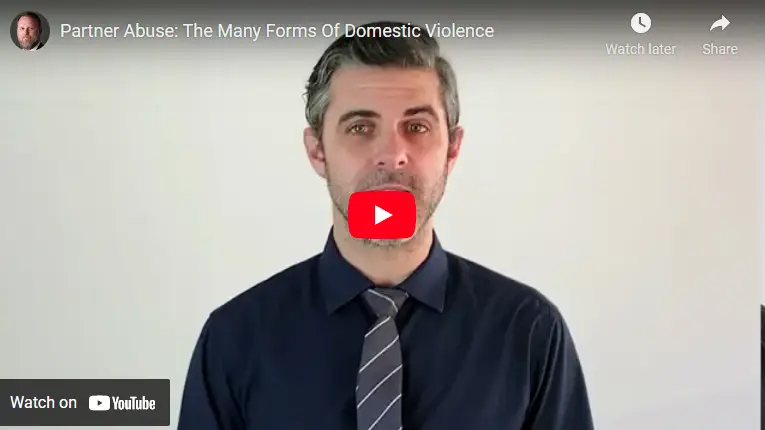There are many forms of domestic violence and none of them are acceptable. Learn some advice for surviving and getting out of that danger as soon as possible.
If you’re wondering if domestic violence could happen to you, take a look at these statistics from the National Domestic Violence Hotline:
- Over 12 million people are the victims of rape, physical partner violence, or stalking by their partner every year
- 29% (or every 3 out of 10) of women have experienced some form of physical or sexual violence by their partner
- Females between 18 and 34 have the highest rates of domestic abuse
There are many different forms of domestic violence. To protect yourself, recognize the signs of an abusive partner. Let’s review everything to know about partner abuse.
What Is Domestic Violence?
Domestic violence is also known as intimate partner violence (IPA), domestic abuse, or relationship abuse. It involves a pattern of unhealthy behaviors exhibited by one partner to control the other. Domestic violence occurs in intimate relationships.
Partner abuse can happen to anyone at any time.
Abusers come from all races, age groups, genders, religions, and sexual orientations. The violence can begin after dating a short time, or after being together for years. Twenty percent of all marriages and intimate partnerships have shown some form of physical abuse.
In most relationships, an abuser may seem perfect in the early stages of a relationship. But as you grow closer, the person may become more controlling and aggressive. Abusive tendencies may gradually appear and intensify as the relationship continues.
What Are the Forms of Domestic Violence?
Partner abuse comes in a variety of forms. The more you know about the warning signs of each type of abuse, the sooner you can get help.
Physical Abuse
Physical domestic violence occurs when one partner exhibits aggressive behaviors towards the other. This type of abuse can occur in any relationship as there are violent men and violent women.
Physical abuse can be direct, such as hitting, or indirect, such as withholding physical needs. Threatening a violent assault on a partner also counts as physical abuse.
Physically abusive tendencies include:
- Explosive temper
- Dramatic and fast changes in mood
- Intimidation (such as breaking small objects when upset)
- Lack of patience
- Forceful behaviors during sex
A physically abusive partner may kick, bite, slap, shake, push, punch, scratch, and beat their victim. The person may withhold physical needs, like food, or refuse to take their victim for medical care. A physical abuser may lock their victim out of their home and exhibit physical restraint or hold the victim down.
During a fight, a physical abuser may also display violent behaviors towards other objects or people.
Abusers often kick or punch walls, throw objects, and destruct property during an outburst. They may abuse, injure, or threaten children, pets, and objects that are meaningful to their victims.
Emotional and Psychological Abuse
Emotional abuse might not be as obvious as physical assaults, but it is just as damaging. A psychologically abusive partner tries to isolate and frighten a victim through destructive words and actions.
Someone who is emotionally and psychologically violent will:
- Make their partner ask for permission before doing things, like seeing friends
- Exhibit extreme neediness, like not wanting to be away from their partner or frequently calling or texting them
- Accuse their partner of infidelity (even if it’s untrue)
- Make jokes at their partner’s expense
- Have frequent mood swings
An emotional abuser will often criticize or humiliate their partner. He or she may do this through name-calling, yelling, patronizing, and sarcastic comments. The abuser may attack their partner’s character by implying the victim isn’t a good person.
A victim may try to express their thoughts or talk about something important, but the abuser will brush it off. Emotionally abusive partners use body language like eye-rolling, headshaking, and sighing to make their victims feel inferior.
Psychological domestic violence includes making threats, spying on a partner’s digital behavior, and exhibiting extreme jealousy. The abuser may treat the victim like a child through lectures and direct orders.
The abusive partner will attempt to control everything in the relationship, such as what the couple does and who the partner socializes with.
Emotional abusers use guilt, denial, and gaslighting to make their partners feel small. The abusive culprit will demand respect, blame others for their problems, and try to turn the tables on their victims.
Abusers will actively turn people against their victims and try to come between the victim and their families.
Financial Abuse
Financial abuse occurs in 99% of domestic violence cases. When a partner exhibits financial abuse, he or she will try to acquire, maintain, and withhold economic resources from their victim. The abuser uses the money to maintain control of the relationship.
Financial domestic abuse is a powerful form of violence as it makes the victim extremely dependent on their abuser. Money is the primary reason women return or stay with an abusive partner.
An offender will start by offering to help a partner budget their finances or make economic decisions.
They may confiscate their partner’s paychecks and intercept bank statements. Many abusers borrow their partner’s money without intending to pay them back. They may make charges on their partner’s credit cards without permission.
As the relationship progresses, the abusive partner will control the purse strings. They may establish allowances or require receipts when their partner purchases something.
Most financially abusive relationships have double standards. The abuser will treat themselves to exuberant spendings, such as dinner and clothes. But when their partner treats him or herself, it becomes a problem.
If a partner uses financial abuse to control their significant other, they will pressure their partner to quit their job. Without a job, the partner becomes completely dependent upon their abuser. If the abused person does not comply, the abusive partner may sabotage their partner’s work responsibilities.
He or she may harass their partner at work, prevent their partner from going to work, or criticize their partner’s career choice.
Sexual Abuse
Sexual domestic violence is when a partner exploits sex and intimacy to gain power over their partner. An abuser may use words or forceful actions to intimidate their significant other.
A sexual abuser will coerce or manipulate their partner to engage in sexual activities. Despite feeling uncomfortable, the partner will be forced to comply. Examples included prostitution, violent sexual actions, or unwanted penetration.
A sexually abusive partner may:
- Mock their partner’s sexuality, body, or sexual preferences
- Make crude jokes at their partner’s expense
- Force their partner into unprotected sex
- Deliberately hurt their partner during sexual intercourse
- Rape their partner
On the other hand, an abusive partner may withhold sex from the victim as a form of punishment and control.
Digital Abuse
Digital abuse is one of the newest forms of domestic violence. One partner uses technology to bully, harass, or intimidate their boyfriend, girlfriend, or spouse.
An abuser will attempt to control their partner’s social media accounts or prevent them from using social media at all.
The abuser may make embarrassing or insulting social media statuses about their victim. He or she may share explicit photos, videos, or messages from their partner online without permission.
A digital abuser will:
- Go through their partner’s phone without consent
- Frequently check their partner’s photos, social media accounts, and text messages
- Make their partner turn on location services
- Demand explicit photos or videos from their partner
- Send sexual photos without their partner’s consent
- Control who their partner follows or is friends with on social media platforms
Someone in a digitally abusive relationship will develop an unhealthy attachment to his or her phone. The abuser will frequently text and check in with their partner. The victim may be scared to be away from their phone in fear of angering their partner.
Healing From Domestic Violence
No one should feel uncomfortable or unsafe in a relationship. No matter if they experience common or situational partner violence, domestic violence victims must recognize they are worthy of a healthy relationship.
Healing from domestic abuse takes time. Once the victim is safe and away from their abuser, they can work on stabilizing their environment. Therapists and mental health groups guide victims through the healing process and provide crucial emotional support.
Attorneys help victims of abuse settle incidents. In 1994, Congress passed the Violence Against Women Act that recognizes domestic violence as a national crime. Attorneys can help victims seek justice and prevent abusers from passing their aggressive behaviors onto others.
It takes time to heal from an abusive relationship. Victims need a strong support system to help them regain control over their lives. Abusive partners leave wounds in their victims, but with the right help, all wounds can heal.
Get the Best Legal Representation
There are many forms of domestic violence, but there are also a variety of ways to seek help. Legal assistance can protect victims of partner abuse and help them find the justice they deserve.
If you’re a victim of domestic abuse, our top-rated team of attorneys can help. Contact us to learn about our legal services.




